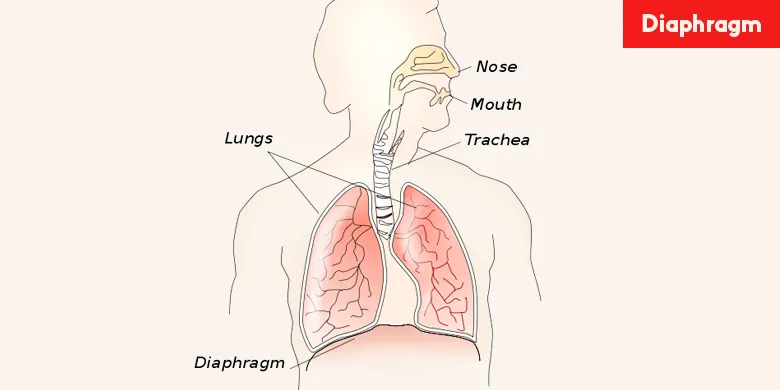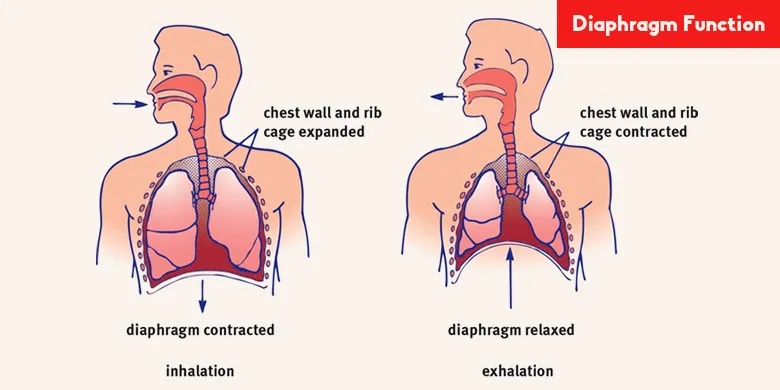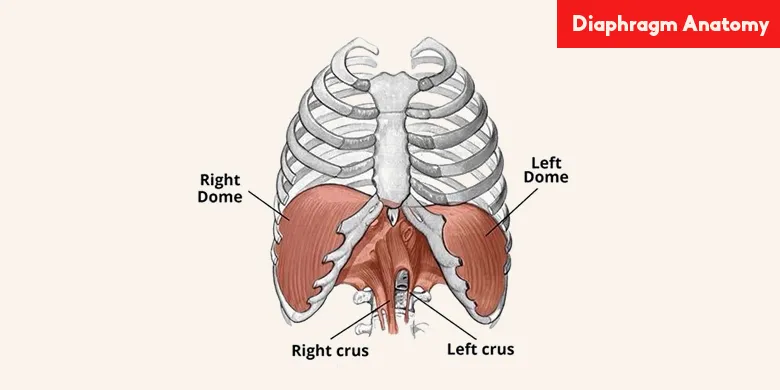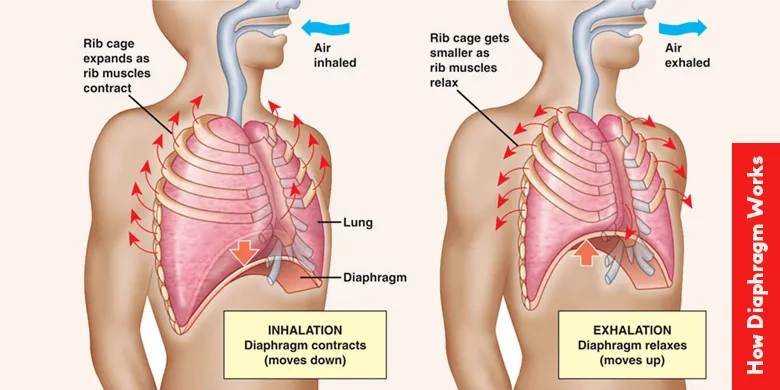What is Diaphragm, and its Functions and Anatomy
What is Diaphragm?
Which organ of the body has been subjected to erroneous physiological presumptions with respect to breath management during singing? Diaphragm! The role previous assigned to the diaphragm does not correspond to its actual function in singing.
The old saw “sing from the diaphragm” is mostly based on the misinformation regarding the location and function of the diaphragm.
However, the diaphragm is one of the major actors in respiration which supports the act of singing.

Fig. 1: What is Diaphragm
Serving as an anatomic division between the abdominal and thoracic cavities, the diaphragm is a muscular structure. While acting as an anatomic barrier, the diaphragm is not a surgical barrier.
Any competent surgeon should be able to cope with a surgical issue involving the diaphragm. The development of the diaphragm is completed at about the seventh week of gestation.
Structurally, the pharynx has three subdivisions with clear boundaries separating one from the other.
These parts are called the nasopharynx, the oropharynx and the laryngeal pharynx or laryngopharynx.
Air from the nose and food and fluids from the mouth have to cross the paths in the pharynx to get entry into trachea and the esophagus, respectively.
Diaphragm Functions
This dome-shaped muscle, called the diaphragm, enables the breathing to take place. The diaphragm is attached to the bones of the thorax.
It assists with inspiration or inhalation of respiratory gases by the lungs through contraction. Here it is also noteworthy that the diaphragm and intercostals are collectively known as the muscles of breathing.

Fig. 2: Functions of Diaphragm
Mittal (2012), in the book “Motor function of the pharyns, the esophagus, and its sphincters.
In Physiology of the Gastrointestinal Tract” points out that costal and crural diaphragms are actually two separate muscles. The primary job of the costal diaphragm is to act as a ventilator muscle.
On the other hand, the crural muscle serves two important jobs. That is, in addition to acting as a ventilator, it has also got a sphincter-like action on the esophagus.
Both the parts of the diaphragm are innervated by branches of the phrenic nerve. The motor neurons of the phrenic nerve are located in the spinal cord at the level of C5 to C7.
However, the topographical localization for the neurons of the costal and crural diaphragms does not exist in the spinal cord.
Diaphragm Anatomy
Your diaphragm is composed of a central tendon, and costal and crural fibers.The central tendon gives it a dome like shape.
The costal fibres of the diaphragm connect the diaphragm to the rib cage after running along the outer rim of the central tendon.
On the other hand, the crural fibers insert posteriorly along the spine after originating along the medial and posterior aspects of the central tendon.

Fig. 3: Diaphragm Anatomy
So, you can say the diaphragm consists of three main regions, called the central diaphragm, the costal diaphragm and the crural diaphragm.
How the Diaphragm Works
Do you know the diaphragm is the primary muscle of inspiration? To initiate inspiration, the lower rib cage expends as the coastal fibres (costal diaphragm) pull the central tendon down and the rib cage up.
Meanwhile, the job of the crural fibres (crural diaphragm) is also to pull down the central tendon to facilitate inspiration.
The actions of the costal and crural diaphragms seem to be independent but parallel.

Fig. 4:How the Diaphragm Works
References:
- Miller, R. (1996). On the art of singing. Oxford University Press, USA.
- Shields, T. W. (Ed.). (2005). General thoracic surgery (Vol. 1). Lippincott Williams & Wilkins.
- Waugh, A., & Grant, A. (2010). Ross & Wilson Anatomy and Physiology in Health and Illness E-Book. Elsevier Health Sciences.
- Mittal, R. K. (2012). Motor function of the pharynx, the esophagus, and its sphincters. In Physiology of the Gastrointestinal Tract (Fifth Edition) (pp. 919-950).
- Marcy, T. (Ed.). (1999). Medical management of pulmonary diseases. CRC Press.


